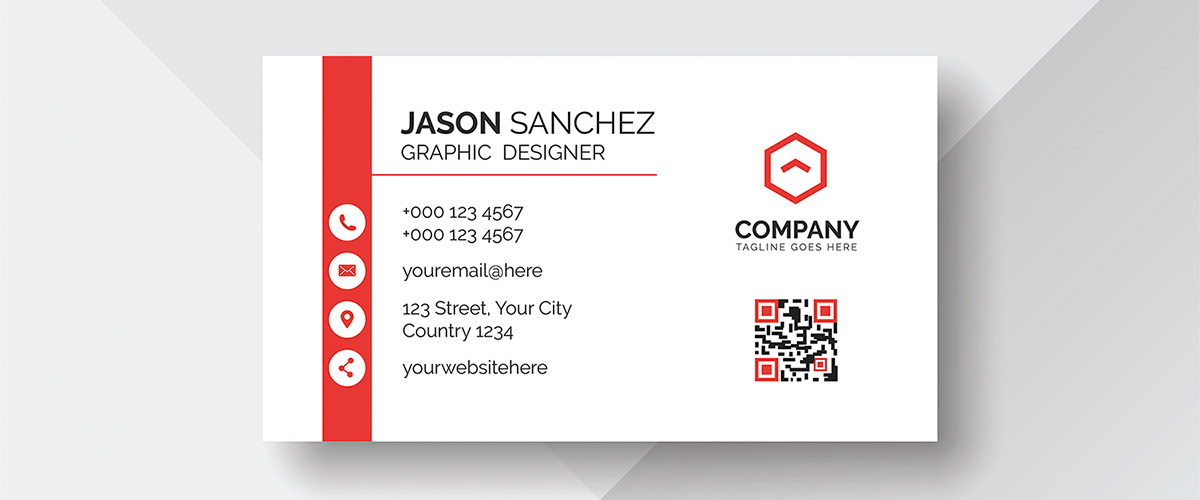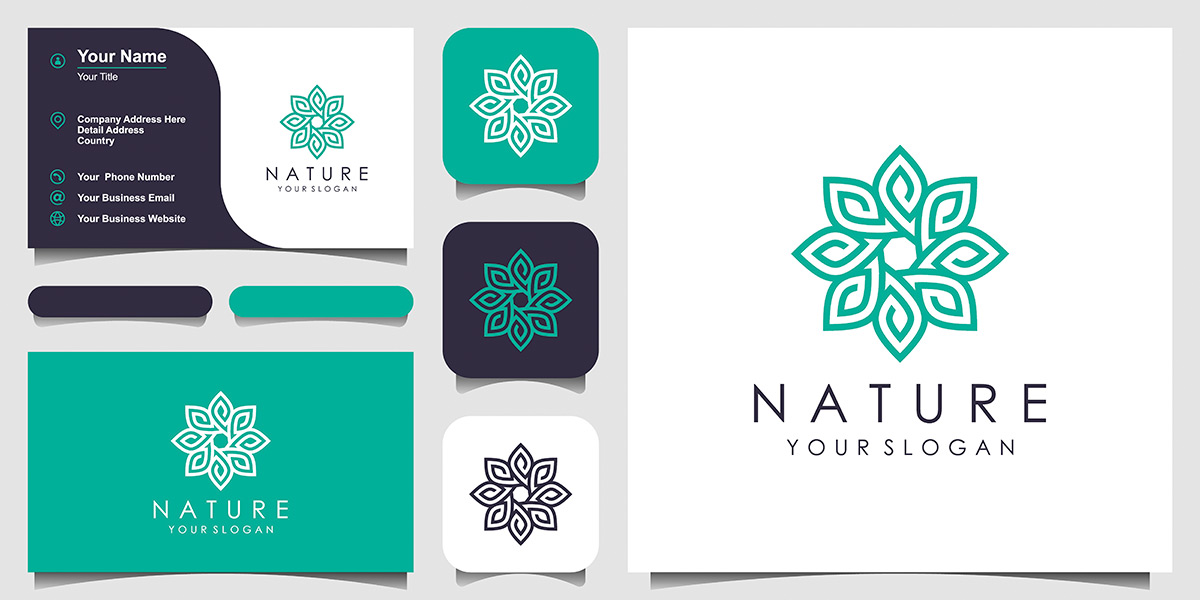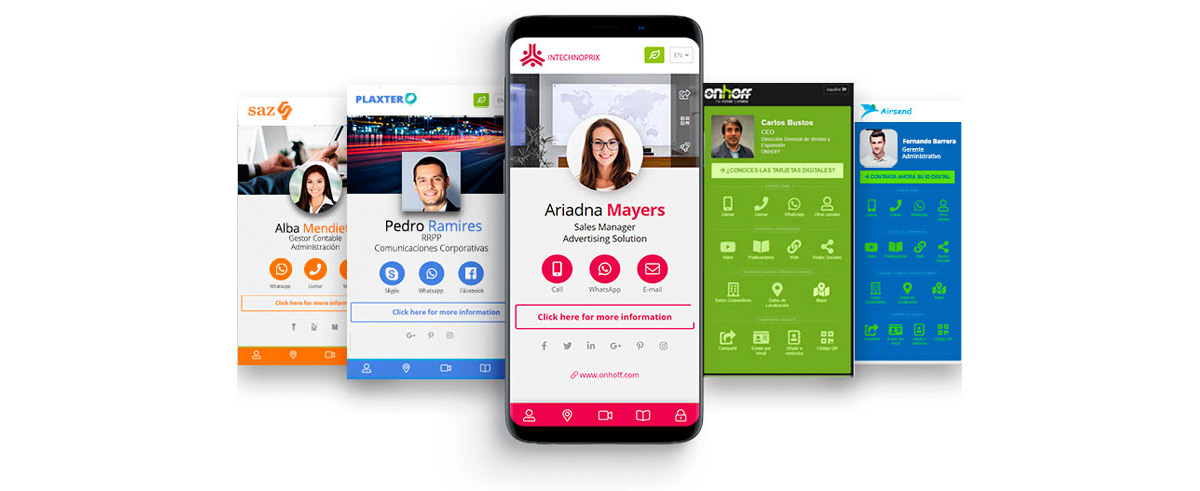We’re here to dive into an often overlooked aspect of branding, and one whose rituals have shifted quite a bit over the last few months: business cards.
Because the entire world is currently in flux due to the global COVID pandemic, so many aspects of how we conduct ourselves professionally are being re-examined for efficiency, environment impact, cultural context and overall gain. It’s necessary and long overdue to examine this, and we’re here to look at this very small but important aspect of professional introductions as well as give some suggestions for ways to move forward in a conscious way.
History of the business card

Business cards first appeared in 15th century China as “visiting cards”, where people would carry around small cards to explain how important they were. These cards were exchanged when there would be a meeting request, as well as when credentials were needed to be proven in order to visit an elite establishment. Paper weight, quality of design and the age of consorts offered clues into how elite the person the card represented was.
Let’s transition to 17th century Europe, where cards were used quite similarly. Often to announce the impending arrival of prosperous or aristocratic people to their local town or home, the cards were also used for a wide variety of social interactions, from business to dating. These cards were shaped and sized similarly to playing cards, were engraved with gold, included bold typefaces and became a staple of the elite. Privileged houses had card trays, also ornate in construction, so those visiting could leave a card.
In the 17th century, addresses were not commonplace. To combat this challenge, “trade cards” were invented specifically so people could find businesses with much more ease. Trade cards were printed on both sides, with one side containing promotional information about the business and the other side featuring a map of where the business was located.
The industrial revolution, amongst all of the other adaptations it had on the world, also created a more casual space to network professionally. Exchanging contact information became essential. Both the “visiting card” and “trade card” were merged into one, and handed out in far less formal situations. The upper class still held onto their aversion towards the informal, but this became widespread in the US.
Wood-cutting technology and letterpress techniques gave way for business card mass production, allowing businesses of all sizes to give contact details out to potential clients, customers and collaborators. By the 1980’s an entire culture arose around business cards. Who could forget the scene in "American Psycho", which stood to be a memorable representation of the at-the-time obsession around carrying and exchanging business cards?
Business cards are serious business in so many parts of the world. In Japan, business cards are called meishi (??). These cards utilize both sides, with one side written in Japanese characters, and often Latin characters on the reverse. The presentation of a meishi to another person is much more formal and ritualistic than in the Western world. In this ritual of giving and receiving, a card should be held at the top two corners, face up and turned so that it can be read by the person receiving the meishi. The receiver takes the card by the bottom two corners using both hands. Placing one's fingers over the name or other information is considered rude. Meishi is kept in a leather case to prevent it from becoming worn, never written on or placed in a pocket, which is another sign of disrespect.
What’s on a business card?

A business card helps you connect with more potential clients, partners and collaborators and amplify your connection especially while starting a business or changing careers. It is still a staple of the professional world. A business card, whether it be digital or printed, is a simple, shareable file or print with contact details. Much like a sidewalk sign stand, these details include your name (personal and/or business), job title (what you currently do or what you’d like to do in the future), logo, email, phone number and website. Contact details could also go on to include social media handles, your professional slogan, a QR code sending your recipient to an important web link, or anything else you find important in this concise introduction. Digitally, these details are often shared in your email contact signature. Sizing for printed business cards are as followed:
North American Standard: 3.5 × 2 in. (88.9 × 50.8 mm)
European Standard: 3.346 × 2.165 in. (85 × 55 mm)
Oceania Standard: 3.54 × 2.165 in. (90 × 55 mm)
Best design practices for business cards

Business card design is an essential part of your branding. Therefore, it should act as a visual extension of your overall brand design. Let’s go over a few best practices.
Keep it simple. Balance, readability, and comprehension are your top priorities when considering design elements.
There are multiple supports that you can print your cards on. Generally, business cards are printed on 350g paper, but these other supports are making their coming out like plastic business cards.
Space-wise, you always want to keep an eye out for three factors: bleed area, trim line, and safety line. Bleed area is the outermost part of the card, which is likely to be removed. The trim line is the target line for cutting cards. The safety line is anything outside, subject to cutting mistakes. Essential elements like text or logos should never be outside of this line. You have two sides! Use both of them, perhaps dedicating one side exclusively to the logo, while the other could showcase contact information. It might also be a good idea to have your logo on both sides, with contact information clearly and legibly close by.
Logos and color schemes are the two most important visual aspects. These will also help influence layout and brand identity of the digital or printed card. For example, if you're desiging real estate investor business cards, then it may make sense to include a house or property in your brand's logo. Logos should take center stage on your card, with other visuals and secondary graphics complimenting and enhancing your logo.
How to go about designing your logo
Essentially you have two options: hire someone to design it for you or design it yourself. Both have their own merits and drawbacks, so let’s examine both individually.
Hiring a Designer
Design a Logo Yourself

Print or digital?
Now that we’ve given a brief history of business cards and outline of best design practices, it’s time to make a decision: print or digital or both? In an era where the real often blends with the digital world, it’s important to distinguish which space is more powerful for you to connect. In your industry, how do collaborators, clients, and partners network? Would you prefer to make introductions online or at a dinner party? If it’s difficult for you to choose one or the other, it might be a good idea to prepare both print business cards and a digital version to share as well.
The pros of print
Printed business cards give a traditional approach at networking, providing an opportunity to communicate your brand with people you’d like to reconnect with in the future. By handing a physical object to another person, this lends itself to a much more memorable first impression. Printed cards especially come in handy at conferences, trade shows, professional lunches, and other in-person networking events.
The cons of print
Research has been done to show that 88% of business cards given out will be thrown out in less than a week. As transparency becomes more and more the norm for businesses, customers are looking at how eco conscious businesses conduct themselves. Printing business cards is wasteful, and uses precious materials that could potentially be thrown away. These days businesses look at more sustainable virtual solutions like digital cards. Every time your business updates information, new cards will need to be printed. Let’s consider the alternative.
The future is digital business cards

An electronic form of your business card would be an eco-conscious, easily scannable, conveniently transferable and progressive way to promote your business. Digital business cards allow ease in saving contact information, integrating calendars, seamless follow ups to introductions, scheduling reminders, maximizing your online presence and so much more. Digital cards are cost effective. Instead of spending money on printing costs, you can use those resources to elevate other marketing aspects of your business. As the world becomes more and more digital, and as we move through a pandemic which limits physical contact and heightens sensitivities around hygiene, digital business cards are the way to go.
While it’s true this alternative might isolate an older generation, it’s easy to create simple and inclusive versions that are accessible for all. Consider the steps in which you can elevate ease in sharing, saving, and transferring information from your digital business card. Save a screenshot for offline use. Utilize legible and larger fonts. Truly consider your clients, collaborators and potential investors to create the ideal digital version of your personal billboard.
Business cards are an effective way to make the first step in showing how progressive, environmentally conscious, and thoughtful your business is. Isn’t that the introduction you’d like to make?




